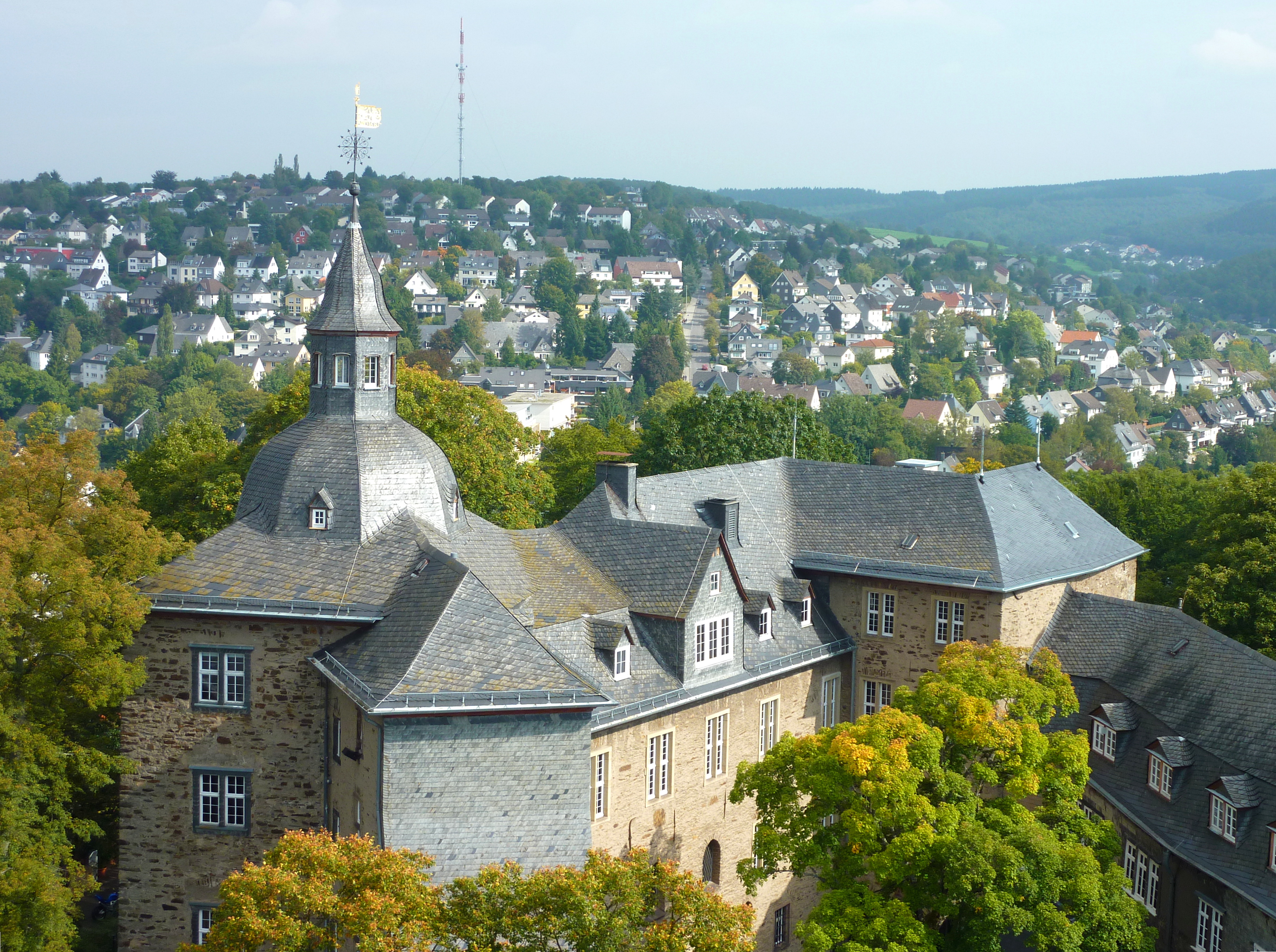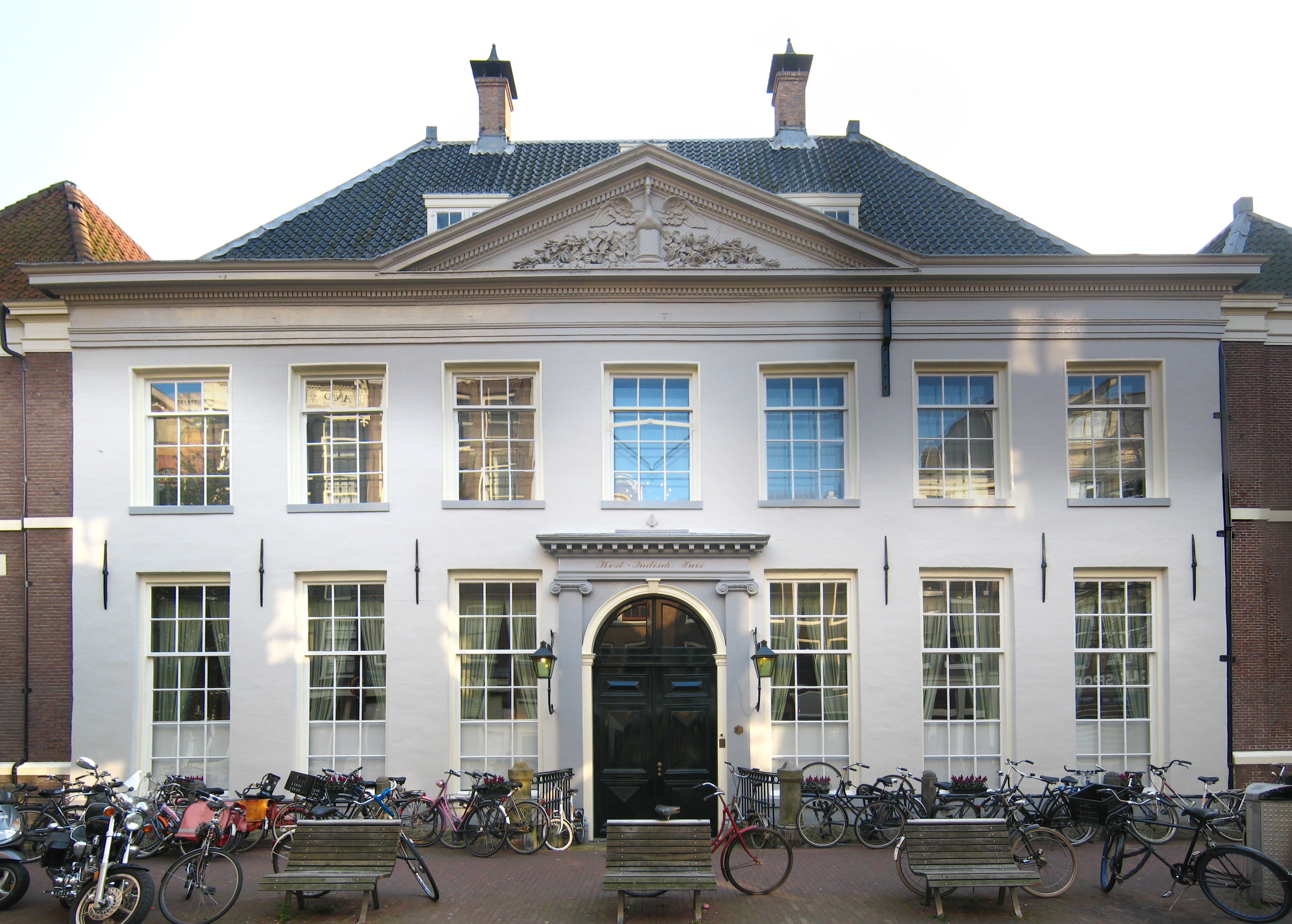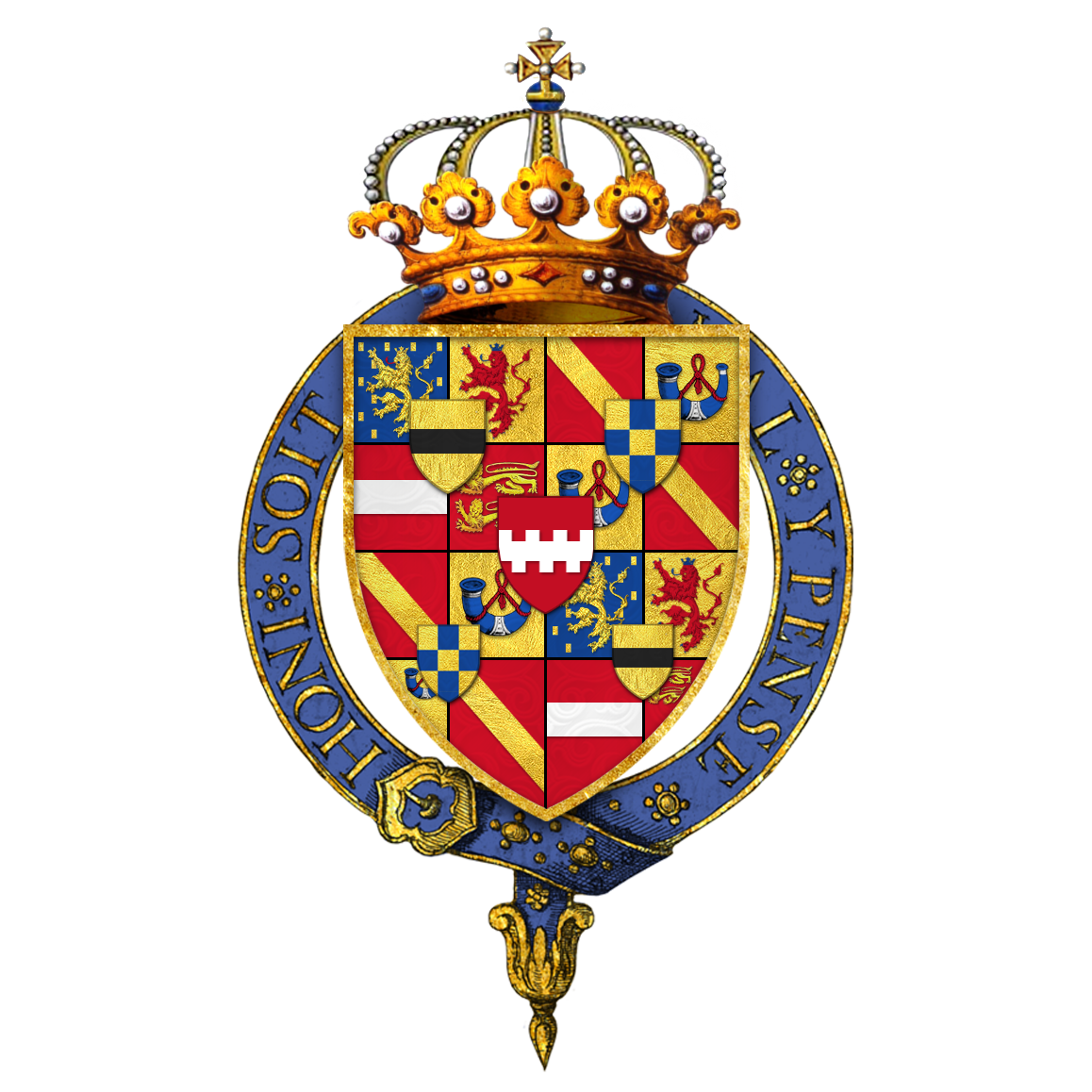|
John Maurice Of Nassau
John Maurice of Nassau (Dutch: ''Johan Maurits van Nassau-Siegen''; German: ''Johann Moritz von Nassau-Siegen''; Portuguese: ''João Maurício de Nassau-Siegen''; 17 June 1604 – 20 December 1679), called "the Brazilian" for his fruitful period as governor of Dutch Brazil, was Count and (from 1664) Prince of Nassau-Siegen. He served as ''Herrenmeister'' (equivalent to Grand Master) of the Order of Saint John (Bailiwick of Brandenburg) from 1652 until his death in 1679. The former residence of John Maurice in The Hague, Netherlands, is now an art museum named Mauritshuis, which means "Maurice House" in Dutch. Early years in Europe He was born in Dillenburg, and his father was John VII of Nassau-Siegen. His grandfather John VI of Nassau was the younger brother of Dutch ''stadtholder'' William the Silent of Orange, making him a grandnephew of William the Silent. He joined the Dutch army in 1621, at a very early age. He distinguished himself in the campaigns of his cousin, the '' ... [...More Info...] [...Related Items...] OR: [Wikipedia] [Google] [Baidu] |
Nassau-Siegen
Nassau-Siegen was a principality within the Holy Roman Empire that existed between 1303 and 1328, and again from 1606 to 1743. From 1626 to 1734, it was subdivided into Catholic and Protestant parts. Its capital was the city of Siegen, founded in 1224 and initially a condominium jointly owned by the archbishopric of Cologne and Nassau. It was located some 50 km east of Cologne, and it contained the modern localities of Freudenberg, Hilchenbach, Kreuztal, Siegen, and Wilnsdorf. First Nassau-Siegen (1303-1328) Nassau-Siegen was first created when the sons of Otto I divided their inheritance: * Henry received Nassau-Siegen * Emicho received Nassau-Hadamar * John received Nassau-Dillenburg John died childless in 1328 and Henry inherited Nassau-Dillenburg. Henry moved to Dillenburg and his descendants are known as the Nassau-Dillenburg line. Second Nassau-Siegen (1606-1743) After John VI of Nassau-Dillenburg died in 1606, Nassau-Dillenburg was divided among his f ... [...More Info...] [...Related Items...] OR: [Wikipedia] [Google] [Baidu] |
The Hague
The Hague ( ; nl, Den Haag or ) is a city and municipality of the Netherlands, situated on the west coast facing the North Sea. The Hague is the country's administrative centre and its seat of government, and while the official capital of the Netherlands is Amsterdam, The Hague has been described as the country's de facto capital. The Hague is also the capital of the province of South Holland, and the city hosts both the International Court of Justice and the International Criminal Court. With a population of over half a million, it is the third-largest city in the Netherlands, after Amsterdam and Rotterdam. The Hague is the core municipality of the Greater The Hague urban area, which comprises the city itself and its suburban municipalities, containing over 800,000 people, making it the third-largest urban area in the Netherlands, again after the urban areas of Amsterdam and Rotterdam. The Rotterdam–The Hague metropolitan area, with a population of approximately 2.6&n ... [...More Info...] [...Related Items...] OR: [Wikipedia] [Google] [Baidu] |
Battle Of Elmina (1637)
The Battle of Elmina in 1637 was a military engagement between the Portuguese and the Dutch that culminated with the capture of the historical St. George of Elmina Fort by the latter. In 1637 the Dutch West India Company detached nine ships from the forces attacking the Portuguese in Brazil to send them against the Portuguese in Fort Elmina. They appointed Colonel Hans Coine to command the fleet which consisted of a total of 1,300 men. They landed on 24 July, a short distance away from Cape Coast, and proceeded by canoe down the Sweet River towards the Portuguese fort, bringing 800 soldiers and three days worth of provisions. A hill named St. Jago dominated the fort which Coine determined needed be taken if they were to take the fort. However, 1,000 natives allied to the Portuguese were at the base of it, preventing the Dutch from seizing it. Coine sent four companies of fusiliers after it, but they were annihilated. A second Dutch detachment that attacked the other side far ... [...More Info...] [...Related Items...] OR: [Wikipedia] [Google] [Baidu] |
Pernambuco
Pernambuco () is a state of Brazil, located in the Northeast region of the country. With an estimated population of 9.6 million people as of 2020, making it seventh-most populous state of Brazil and with around 98,148 km², being the 19th-largest in area among federative units of the country, it is the sixth-most densely populated with around 89 people per km². Its capital and largest city, Recife, is one of the most important economic and urban hubs in the country. Based on 2019 estimates, the Recife Metropolitan Region is seventh-most populous in the country, and the second-largest in northeastern Brazil. In 2015, the state had 4.6% of the national population and produced 2.8% of the national gross domestic product (GDP). The contemporary state inherits its name from the Captaincy of Pernambuco, established in 1534. The region was originally inhabited by Tupi-Guarani-speaking peoples. European colonization began in the 16th century, under mostly Portuguese rule in ... [...More Info...] [...Related Items...] OR: [Wikipedia] [Google] [Baidu] |
Recife
That it may shine on all ( Matthew 5:15) , image_map = Brazil Pernambuco Recife location map.svg , mapsize = 250px , map_caption = Location in the state of Pernambuco , pushpin_map = Brazil#South America , pushpin_map_caption = , pushpin_relief = yes , coordinates = , subdivision_type = Country , subdivision_name = , subdivision_type1 = Region , subdivision_type2 = State , subdivision_name1 = Northeast , subdivision_name2 = , established_title = Founded , established_date = March 12, 1537 , established_title2 = Incorporated (as village) , established_date2 = 1709 , established_title3 = Incorporated (as city) , established_date3 = 1823 , leader_title = Mayor , leader_name = João Henrique Campos ( PSB) , leader_title1 = Vice Mayor , leader_name1 = Isabella de Roldão ( PT) , area_total_km2 = 218 , ar ... [...More Info...] [...Related Items...] OR: [Wikipedia] [Google] [Baidu] |
Dutch West India Company
The Dutch West India Company ( nl, Geoctrooieerde Westindische Compagnie, ''WIC'' or ''GWC''; ; en, Chartered West India Company) was a chartered company of Dutch merchants as well as foreign investors. Among its founders was Willem Usselincx (1567–1647) and Jessé de Forest (1576–1624). On 3 June 1621, it was granted a charter for a trade monopoly in the Dutch West Indies by the Republic of the Seven United Netherlands and given jurisdiction over Dutch participation in the Atlantic slave trade, Brazil, the Caribbean, and North America. The area where the company could operate consisted of West Africa (between the Tropic of Cancer and the Cape of Good Hope) and the Americas, which included the Pacific Ocean and the eastern part of New Guinea. The intended purpose of the charter was to eliminate competition, particularly Spanish or Portuguese, between the various trading posts established by the merchants. The company became instrumental in the largely ephemeral Dutch coloni ... [...More Info...] [...Related Items...] OR: [Wikipedia] [Google] [Baidu] |
Brazil
Brazil ( pt, Brasil; ), officially the Federative Republic of Brazil (Portuguese: ), is the largest country in both South America and Latin America. At and with over 217 million people, Brazil is the world's fifth-largest country by area and the seventh most populous. Its capital is Brasília, and its most populous city is São Paulo. The federation is composed of the union of the 26 States of Brazil, states and the Federal District (Brazil), Federal District. It is the largest country to have Portuguese language, Portuguese as an List of territorial entities where Portuguese is an official language, official language and the only one in the Americas; one of the most Multiculturalism, multicultural and ethnically diverse nations, due to over a century of mass Immigration to Brazil, immigration from around the world; and the most populous Catholic Church by country, Roman Catholic-majority country. Bounded by the Atlantic Ocean on the east, Brazil has a Coastline of Brazi ... [...More Info...] [...Related Items...] OR: [Wikipedia] [Google] [Baidu] |
Siege Of Schenkenschans
The siege of Schenkenschans (30 July 1635 – 30 April 1636) was a major siege of the Eighty Years' War. In a successful campaign the Army of Flanders, commanded by Spanish general Cardinal-Infante Ferdinand of Austria, captured Schenkenschans along with a number of important towns, reversing recent Dutch gains and opening the Dutch Republic to a possible invasion. The Dutch Stadtholder, Fredrick Henry, pushed the republic's military efforts to their limit to recapture the fortress of Schenkenschans to counter the threat to the exposed Dutch heartland. He succeeded in doing so after a costly nine month siege. Background The fortress with the name ''Schenkenschans'' ( en, Schenk's Sconce, es, Esquenque) was founded by the German mercenary commander Maarten Schenk van Nydeggen on the orders of stadtholder Adolf van Nieuwenaar in 1586. Its location was strategically chosen, because it dominated the place where in 1586 the Rhine and the Waal River forked (currently these river ... [...More Info...] [...Related Items...] OR: [Wikipedia] [Google] [Baidu] |
Den Bosch
s-Hertogenbosch (), colloquially known as Den Bosch (), is a city and municipality in the Netherlands with a population of 157,486. It is the capital of the province of North Brabant and its fourth largest by population. The city is south of the Maas river and near the Waal; it is to the north east of the city of Tilburg, north west of Eindhoven, south west of Nijmegen, and a longer distance south of Utrecht and south east of Dordrecht. History The city's official name is a contraction of the (archaic) Dutch ''des Hertogen bosch'' — "the forest of the duke". The duke in question was Henry I of Brabant, whose family had owned a large estate at nearby Orthen for at least four centuries. He founded a new town located on some forested dunes in the middle of a marsh. At age 26, he granted 's-Hertogenbosch city rights and the corresponding trade privileges in 1185. This is, however, the traditional date given by later chroniclers; the first mention in contemporaneous sources is ... [...More Info...] [...Related Items...] OR: [Wikipedia] [Google] [Baidu] |
Frederick Henry, Prince Of Orange
Frederick Henry ( nl, Frederik Hendrik; 29 January 1584 – 14 March 1647) was the sovereign prince of Orange and stadtholder of Holland, Zeeland, Utrecht, Guelders, Overijssel in the Dutch Republic from 1625 until his death in 1647. In the last seven years of his life, he was also the stadtholder of Groningen (1640-1647). As the leading soldier in the Dutch wars against Spain, his main achievement was the successful Siege of 's-Hertogenbosch in 1629. It was the main Spanish base and a well-fortified city protected by an experienced Spanish garrison and by formidable water defenses. His strategy was the successful neutralization of the threat of inundation of the area around 's-Hertogenbosch' and his capture of the Spanish storehouse at Wesel. Biography Early life Frederick Henry was born on 29 January 1584 in Delft, Holland, Dutch Republic. He was the youngest child of William the Silent and Louise de Coligny. His father William was stadtholder of Holland, Zeeland, Utrecht, a ... [...More Info...] [...Related Items...] OR: [Wikipedia] [Google] [Baidu] |
William The Silent
William the Silent (24 April 153310 July 1584), also known as William the Taciturn (translated from nl, Willem de Zwijger), or, more commonly in the Netherlands, William of Orange ( nl, Willem van Oranje), was the main leader of the Dutch Revolt against the Spanish Habsburgs that set off the Eighty Years' War (1568–1648) and resulted in the formal independence of the United Provinces in 1648. Born into the House of Nassau, he became Prince of Orange in 1544 and is thereby the founder of the Orange-Nassau branch and the ancestor of the monarchy of the Netherlands. In the Netherlands, he is also known as Father of the Fatherland (''Pater Patriae'') ( nl, Vader des Vaderlands). A wealthy nobleman, William originally served the Habsburgs as a member of the court of Margaret of Parma, governor of the Spanish Netherlands. Unhappy with the centralisation of political power away from the local estates and with the Spanish persecution of Dutch Protestants, William joined the D ... [...More Info...] [...Related Items...] OR: [Wikipedia] [Google] [Baidu] |




.jpg)


